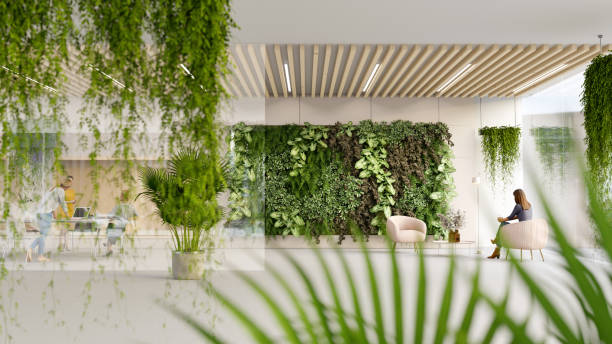In an era where environmental consciousness holds significant importance, the construction industry is shifting towards eco-friendly practices. As a homeowner or real estate developer, understanding and utilizing a sustainable building materials list can pave the way for more environmentally responsible building projects. By making informed choices, we can contribute to reducing carbon footprints and creating healthier living spaces.
Exploring the sustainable building materials list not only benefits the planet but also offers long-term financial savings and health benefits for occupants. Let’s delve into the world of sustainable construction and discover the materials that are making a positive impact.

Why Choose Sustainable Building Materials?
Sustainable building materials are selected for their minimal environmental impact and efficiency. These materials are often sourced from renewable or recycled origins, reducing the reliance on nonrenewable resources and minimizing waste. By choosing such materials, builders can ensure that their constructions are both environmentally friendly and efficient. For more insights, read about green construction guide.
The Economic Benefits
While opting for sustainable materials might seem costly initially, they often lead to substantial cost savings in the long run. These materials tend to be more durable and require less maintenance, decreasing repair and replacement costs. Energy-efficient materials also help in reducing utility bills, creating financial benefits over time.
Enhancing Health and Well-being
Using sustainable materials can significantly improve the indoor air quality of a building, resulting in healthier living or working environments. Many conventional building materials emit harmful chemicals, whereas eco-friendly materials usually contain fewer volatile organic compounds (VOCs).
Top Sustainable Building Materials
Bamboo
Bamboo is a renewable resource that grows rapidly and can be harvested without causing deforestation. It is known for its strength and flexibility, making it an excellent material for flooring, cabinetry, and even structural support in building projects.
Recycled Steel
Using recycled steel in construction can significantly reduce energy consumption and the depletion of natural resources. Compared to new steel production, recycling steel uses up to 75% less energy, making it a highly sustainable choice for structural applications and roofing. The green construction benefits include not only financial savings but also a lesser environmental impact.
Rammed Earth
Rammed earth involves compacting a damp mixture of earth with a small amount of cement to create walls with excellent thermal mass. Its an ancient building method experiencing a resurgence due to its low environmental impact and ability to regulate temperature effectively.
Reclaimed Wood
Reclaimed wood is an eco-friendly alternative to new wood and provides a rustic charm to construction and design projects. By repurposing wood from demolished buildings or old furniture, it helps in reducing deforestation and waste.
Natural Fiber Insulation
Natural fiber insulation materials, such as sheeps wool or cotton, are biodegradable and have excellent insulating properties. They offer a sustainable alternative to synthetic insulation materials, improving energy efficiency without adverse health effects.
How to Implement Sustainable Building Practices
Conduct a Life Cycle Assessment
A life cycle assessment (LCA) involves evaluating the environmental impacts associated with all the stages of a building’s life. This assessment helps identify areas where sustainability can be improved.
Focus on Energy Efficiency
Integrating energy-efficient designs and technologies can significantly lower a building’s energy consumption. Consider implementing passive solar design, energy-efficient lighting, and solar panels.
Prioritize Local and Renewable Materials
Utilizing local materials reduces transportation emissions, and selecting renewable resources ensures a continuous supply without environmental degradation.
Overcoming Challenges in Sustainable Construction
Initial Cost Concerns
Although the upfront costs for sustainable materials can be higher, consider them as an investment. Reduced operational costs and increased property values often counterbalance these expenses.
Finding Skilled Professionals
The growing demand for sustainable construction is fostering a skilled workforce. Seeking professionals with experience in sustainable building strategies is key to ensuring that your project meets environmental standards.
Staying Informed About Innovations
Technology and methods in sustainable building are continually evolving. Staying updated with the latest innovations through resources like the U.S. Green Building Council can help incorporate new ideas into your building projects.
Conclusion
Incorporating a sustainable building materials list into your construction projects is more than a trend; it’s a commitment to the future. Through the thoughtful selection of materials and practices, we can build a sustainable world where structural integrity and environmental preservation coexist.

Frequently Asked Questions
What defines a material as sustainable?
A material is considered sustainable if it is sourced responsibly, has low environmental impact, and contributes to energy efficiency or waste reduction.
Are sustainable materials more durable?
Many sustainable materials are indeed more durable, offering better performance over time, which often translates into lower maintenance costs and fewer replacements.
Where can I find sustainable building materials?
They can be sourced from specialty suppliers, or by consulting construction professionals familiar with sustainable practices. Online resources like [local green guides](https://brucemasseyconstruction.com/green-construction-step-by-step/) also provide valuable insights.
This article contains affiliate links. We may earn a commission at no extra cost to you.



